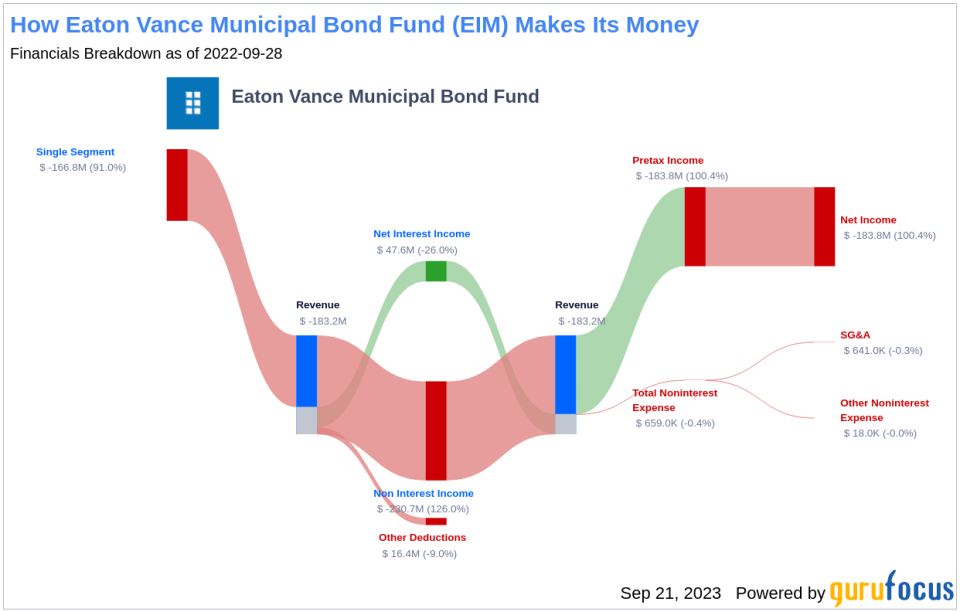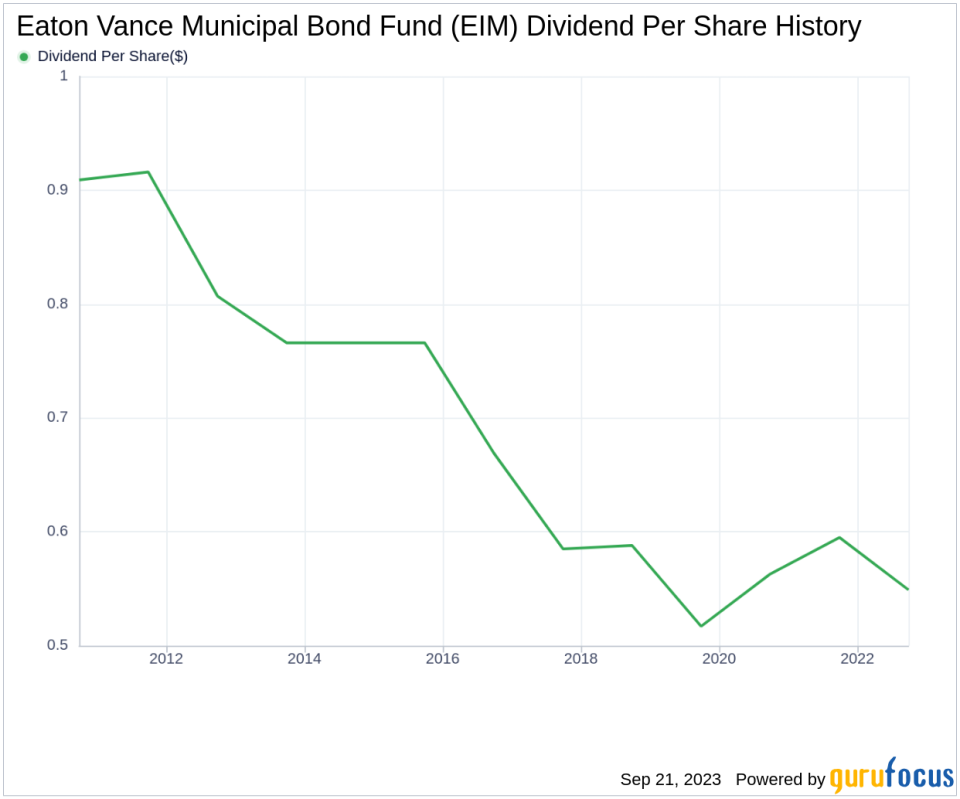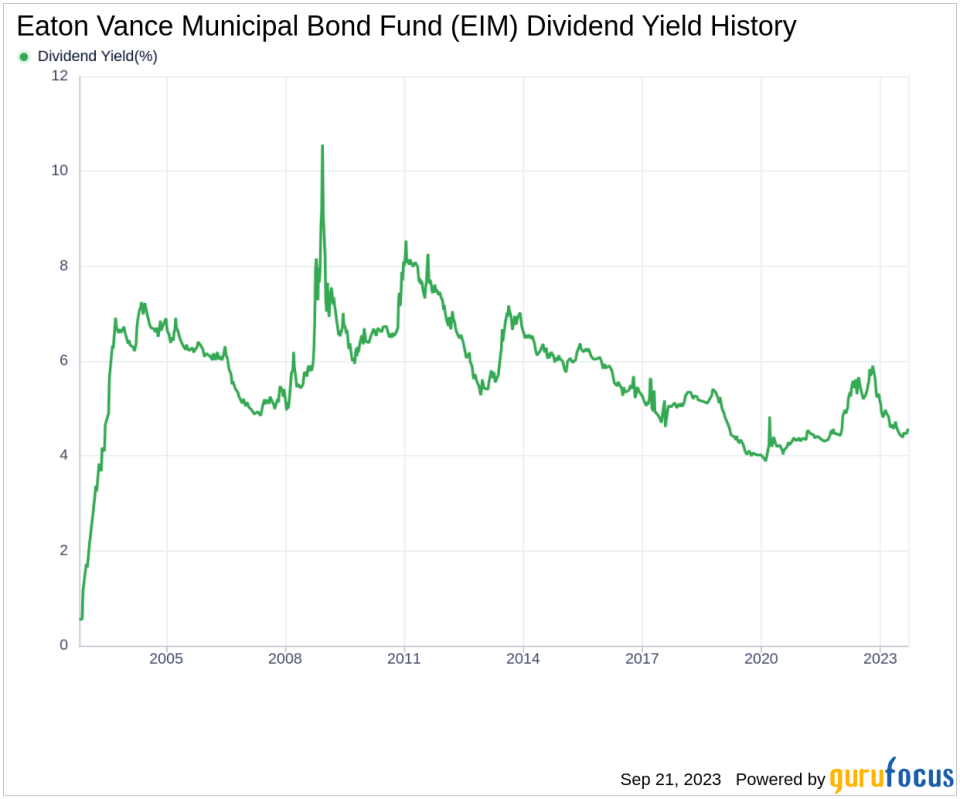Delving into Eaton Vance Municipal Bond Fund's Dividend Performance
An analysis of the company's dividend history, yield, growth rate, and sustainability
Eaton Vance Municipal Bond Fund (EIM) recently announced a dividend of $0.03 per share, payable on 2023-09-29, with the ex-dividend date set for 2023-09-21. As investors look forward to this upcoming payment, the spotlight also shines on the company's dividend history, yield, and growth rates. Using the data from GuruFocus, let's deep dive into Eaton Vance Municipal Bond Funds dividend performance and assess its sustainability.
Understanding Eaton Vance Municipal Bond Fund
Warning! GuruFocus has detected 1 Warning Sign with EIM. Click here to check it out.
This Powerful Chart Made Peter Lynch 29% A Year For 13 Years
How to calculate the intrinsic value of a stock?
Eaton Vance Municipal Bond Fund is a non-diversified closed-end management investment company. It consists of Municipal bond fund, California municipal bond fund, and New York municipal bond fund. The company's investment objective is to provide current income exempt from regular federal income tax, alternative minimum tax, and taxes in specified states. Its investment strategy is to invest primarily in higher quality bonds.
Tracing Eaton Vance Municipal Bond Fund's Dividend History
Eaton Vance Municipal Bond Fund has maintained a consistent dividend payment record since 2002. Dividends are currently distributed on a monthly basis. Below is a chart showing annual Dividends Per Share for tracking historical trends.
Analysing Eaton Vance Municipal Bond Fund's Dividend Yield and Growth
As of today, Eaton Vance Municipal Bond Fund currently has a 12-month trailing dividend yield of 4.55% and a 12-month forward dividend yield of 4.26%. This suggests an expectation of decrease dividend payments over the next 12 months.
Over the past three years, Eaton Vance Municipal Bond Fund's annual dividend growth rate was 2.00%. Extended to a five-year horizon, this rate decreased to -0.60% per year. And over the past decade, Eaton Vance Municipal Bond Fund's annual dividends per share growth rate stands at -4.30%.
Based on Eaton Vance Municipal Bond Fund's dividend yield and five-year growth rate, the 5-year yield on cost of Eaton Vance Municipal Bond Fund stock as of today is approximately 4.42%.
Assessing Dividend Sustainability: Payout Ratio and Profitability
To assess the sustainability of the dividend, one needs to evaluate the company's payout ratio. The dividend payout ratio provides insights into the portion of earnings the company distributes as dividends. A lower ratio suggests that the company retains a significant part of its earnings, thereby ensuring the availability of funds for future growth and unexpected downturns. As of 2023-03-31, Eaton Vance Municipal Bond Fund's dividend payout ratio is 0.00.
Eaton Vance Municipal Bond Fund's profitability rank, offers an understanding of the company's earnings prowess relative to its peers. GuruFocus ranks Eaton Vance Municipal Bond Fund's profitability 2 out of 10 as of 2023-03-31, suggesting the dividend may not be sustainable. The company has reported net profit in 6 years out of past 10 years.
Considering Growth Metrics for Future Outlook
To ensure the sustainability of dividends, a company must have robust growth metrics. Eaton Vance Municipal Bond Fund's growth rank of 2 out of 10 suggests that the company has poor growth prospects and thus, the dividend may not be sustainable.
Conclusion
While Eaton Vance Municipal Bond Fund has consistently paid dividends, its negative growth rates and low profitability and growth ranks raise questions about the sustainability of its dividends. Investors should carefully consider these factors before making investment decisions. GuruFocus Premium users can screen for high-dividend yield stocks using the High Dividend Yield Screener.
This article first appeared on GuruFocus.



